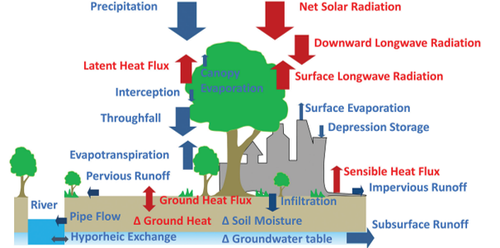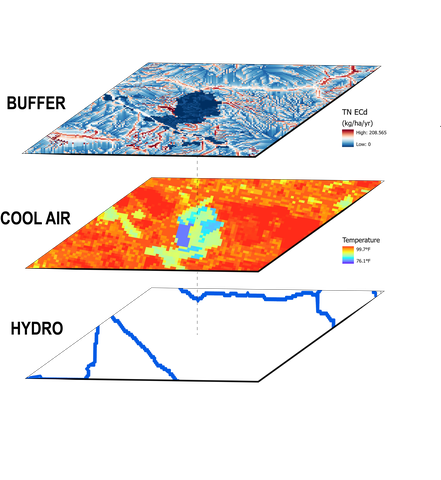i-Tree Research Suite
Overview

The i-Tree Research Suite offers peer-reviewed models to analyze the benefits of trees and other landscape attributes and assist in forest advocacy and ecosystem health. If you have questions about any of these tools, please contact i-Tree Support <info@itreetools.org>. Note that free technical support is not available for the research suite, but expert consultation can be arranged by reaching out to the i-Tree Team.
Visit the Core Tools listing for more user-friendly tools that make ecosystem services science accessible to broad audiences. Use of the i-Tree Research Suite code indicates acceptance of the EULA.
Introductory Materials
Presentations
- Watch: Introductory Seminar (2019)
- Watch: Mapping Urban Heat Island Effect with i-Tree Cool Air (2023)
- Slides: i-Tree Tools Help Strategically Manage Urban Forests
- Slides: i-Tree Tools Assist with Strategically Designing Tree Cover and Improving Community Resilience
Recent Projects
i-Tree Cool Air
National Assessment of Air Temperature Effects from Trees on Human Health (2022)
Evaluating Urban Canopy's Role in Alleviating Extreme Heat (2023)
i-Tree Hydro
GLRI Forest Planning for Watershed Health (2021)
GLRI Land Use Planning Impacts on Near Shore Pollution Loading in the Great Lakes (2024)
Research Suite Downloads & Tools
Downloads for HydroPlus and supporting tools are listed below. Note that the Research Suite exists in a technical and academic environment. Updated science and bug fixes are continually being implemented.

- i-Tree HydroPlus (Revision 1621 .zip) including model .exe, manual, test cases, auto-testing script, and PEST calibration (zip): a unified C++ codebase for various environmental models that share common algorithms. HydroPlus models include:
- i-Tree Hydro: a statistically-distributed hydrology model simulating the effects of land cover changes on water quantity and quality, unique in explicitly modeling vegetation processes (Wang et al., 2008).
- Green Infrastructure: Addition to i-Tree Hydro which simulates and measures the benefits of green infrastructure installations.
- i-Tree Cool Air: a spatially-explicit air temperature model simulating the effects of land cover changes using i-Tree Hydro's water budget and an energy budget that explicitly accounts for vegetation processes (Yang et al., 2013).
- i-Tree Cool River: a river temperature model for simulating the effects of channel morphology, riparian shading, tributaries, stormwater inflow, groundwater mixing, and river restoration by using a set of 1D advection, dispersion, and energy flux equations (Abdi & Endreny, 2019).
- i-Tree Hydro: a statistically-distributed hydrology model simulating the effects of land cover changes on water quantity and quality, unique in explicitly modeling vegetation processes (Wang et al., 2008).
- WeatherPrep weather preprocessor (revision 198 .zip): a weather pre-processor required to create weather inputs for i-Tree HydroPlus (Hirabayashi & Endreny, 2025).
- i-Tree Energy: a building energy balance model coded in Python, mechanistically simulating the heating and cooling energy savings benefits for buildings with nearby trees (DeMarco & Endreny, forthcoming).
- i-Tree Buffer: a nutrient hotspot mapping tool coded in Python, based on a contributing area dispersal area (CADA) nonpoint-source (NPS) water quality model (Stephan & Endreny, 2016). i-Tree Buffer will be integrated with HydroPlus in 2023.
- Tree Compensation Calculator: data tables and a calculator to estimate the number of trees (or monetary value) needed to compensate for the loss of a healthy tree of any size (Nowak & Aevermann, 2019).
- Autocalibration utilities for HydroPlus (revision 2) derived from PEST 17.1 (.zip)
- CoolAir GUI (BETA revision 10 .zip)